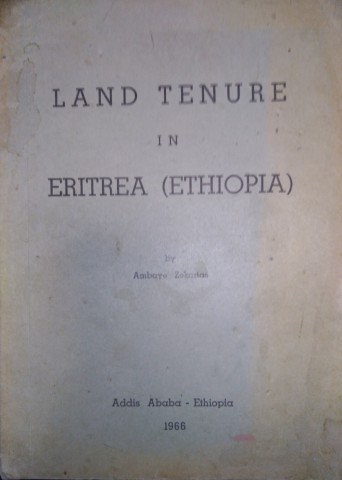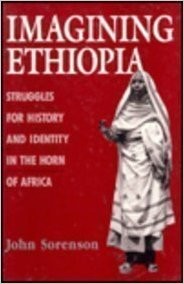John Sorenson's "Imagining Ethiopia: Struggles for History and Identity in the Horn of Africa" (1993) presents portrayals of Ethiopia – domestic and foreign, historical and present – and in some ways is similar to "Famine and Foreigners" (2010) by Gill. The book is partially about identity, but more about portrayals and perceptions of Ethiopia, Ethiopians, Eritreans and Oromos. The book meanders from an interesting foundation of identity formation to famine in Ethiopia, and then portrayals of Ethiopia in international discourse and by specific personalities. Until the conclusion (which provides a concise summary of the book) the linkages between the arguments are not always clear.
Particularly if you are looking for media sources on portrayals and uses of Ethiopia by foreign media and personalities, this book offered detailed research. There are also some useful early references to the rise of Oromo nationalism, at a time when many academics felt the Oromo movement would not succeed or gain momentum as the Eritrean struggle did. "The Oromo movement, although it has attracted little attention in comparison with the Eritrean situation, may be decisive for the future of Ethiopia" is one telling statement, given the events of 2016 to 2018.
On constructions of history and identity, John writes: "The past is contested terrain. Selectively remembered, conveniently forgotten, or sometimes invented, it may be used to justify and legitimize actions in the present and to provide the model for a future which is to be created in accordance with certain traditions. Not simply a sequence of completed events, the past is a creation of the present, with traditions invented to serve particular needs" (p. 38).
Further on: "Nationalist movements create their own mythologies, organizing symbols and key incidents, real or invented, into narrative forms that evoke emotional resonance. In general, the narrative of Eritrean nationalism has a different, more recent historical emphasis than that of Ethiopian nationalism, with its emphasis on ancient history and its idea of a state that has existed for thousands of years. As noted, Eritrean identity is regarded as a product of the shared experience of colonial occupation" (p. 49).
The book was published in 1993, and it is challenging to understand what was known at the time, however this book is colored by two shades. First, the research was conducted with refugee and immigrant communities, not in-country study. Second, the author was working with an Eritrean organization during its struggle for independence, and their narratives are quite strong in the work. I believe that if Sorenson had done in-country study some of the arguments would have shifted – Ethiopians all have multiple identities, each with their own imagined communities, overlapping and contradictory, and sometimes the generalizations in this book over simplify. For example, the Amhara dominance and hegemony that is repeated throughout the book would be countered by other nations, nationalities and peoples who have long expressed resisted that imposition, even asserted their own cultural dominance over others or have been dominated by other ethnicities (not Amhara). Orthodox and Muslim; Wolaita and Dawuro; Agaw and Amhara; national and regional state dynamics (e.g. a regional majority and a national minority); male and female; rural and urban; 'indigenous' or resettled; formerly enslaved families and elite families within ethnic groups; pastoralist and agriculturalist; youth and elders; various political affiliations people differently hold within ethnic groups and their access to power over time; layers upon layers. The experience is far more complicated.


